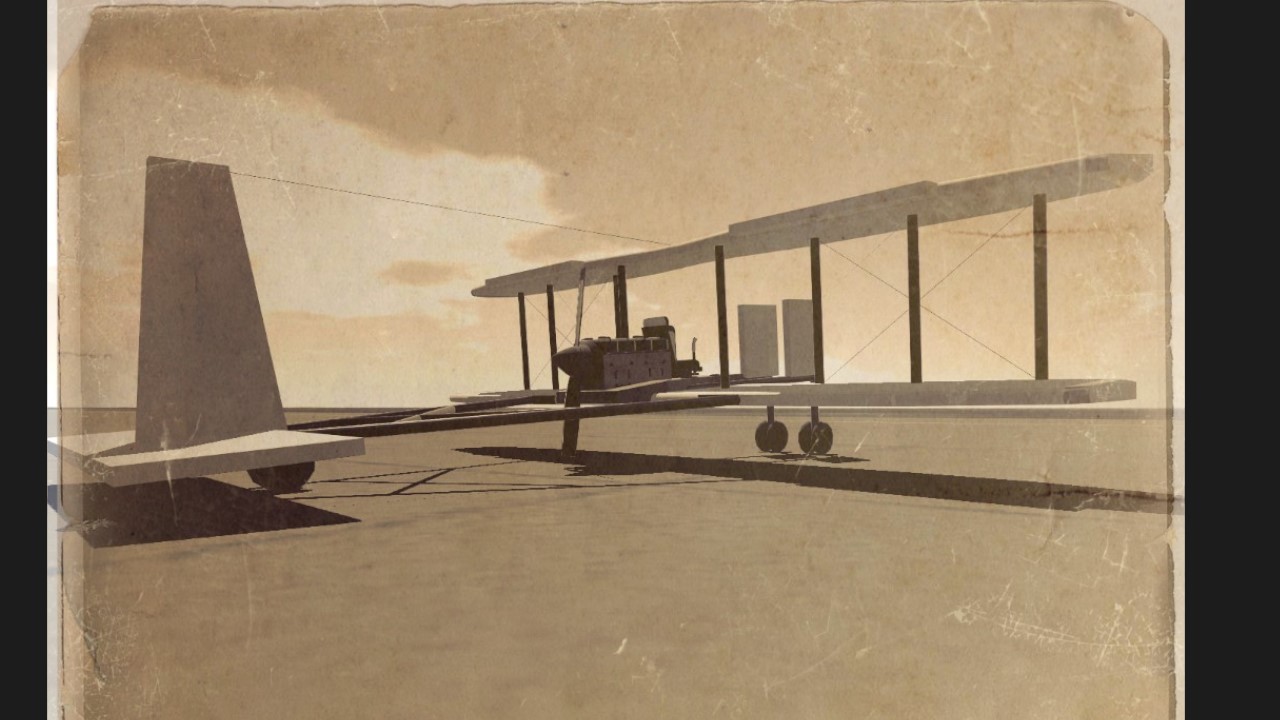After years of displaying our current commercial projects, we at Epic Engineering thought it would be right to chronologically run down the principle designs which allowed our company become what it is today.
Origins
Founded in 1906 by chief designer Cuthbert Epic and his brother Albert, who was mostly responsible for accounting, this ambitious duo intended to swiftly execute on the breakthroughs pioneered by the Wright Brothers. However, back then, heavier than air flight was still a novelty, so even the smallest step of progress was a feat to be celebrate. Never was the celebration as jovial as on the 30th of October 1908, when after hours of tinkering with a rather temperamental engine, the Sabertooth - named for it's noticeable wheel arrangement- slowly took to the sky.
Design
While taking inspiration from the Wright Flyer, Cuthbert made some alterations to the landing gear, introducing a wheeled taildragger undercarriage. He also opted for dedicated ailerons instead of warping the wing surface for control, as well as a front mounted double rudder arrangement as well as a large tail fin at the rear.
Handling
While packing a decent 42hp engine turning a two-blade propeller, some unsolved inefficiencies resulted in the take-off speed being achieved at 42kmh. The aileron control was somewhat limited due to the slow airflow over the wings, however the decent rudder authority made up for that.
In the early days, which is why this design was intended more of a proof of concept rather than a record breaking long range flyer.
As always, thank you so much for your interest in our products. While this is a legacy product, aftermarket upgrades and modifications are still highly encouraged. If you still have any questions, feel free to ask.
Specifications
Spotlights
- TheGliderGuy 2.2 years ago
- YarisSedan 2.2 years ago
General Characteristics
- Created On Windows
- Wingspan 29.9ft (9.1m)
- Length 27.3ft (8.3m)
- Height 10.1ft (3.1m)
- Empty Weight 736lbs (334kg)
- Loaded Weight 798lbs (362kg)
Performance
- Horse Power/Weight Ratio 0.043
- Wing Loading 0.9lbs/ft2 (4.2kg/m2)
- Wing Area 935.1ft2 (86.9m2)
- Drag Points 3807
Parts
- Number of Parts 100
- Control Surfaces 9
- Performance Cost 446







Wright Brother's Lookin' Ahh